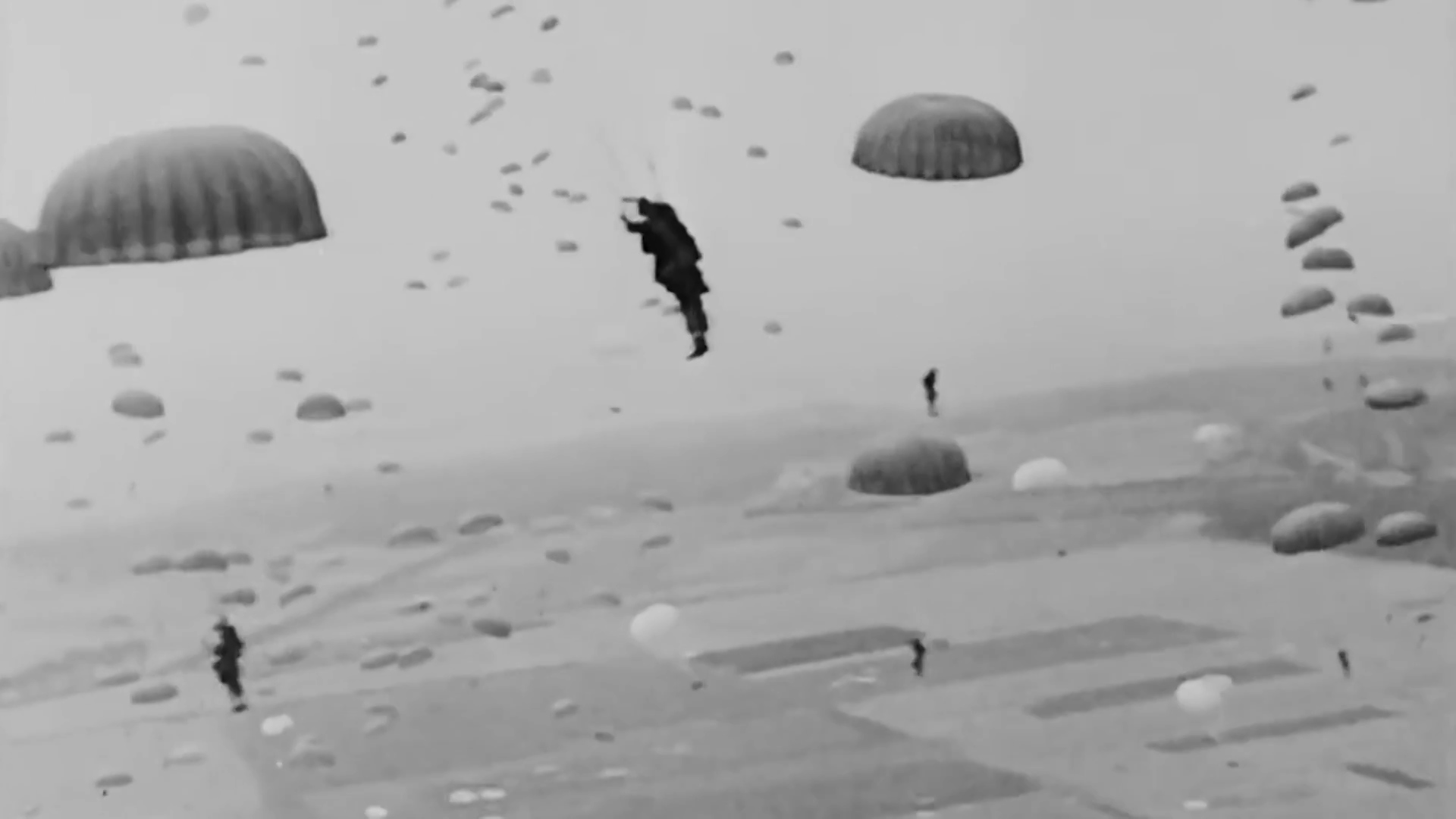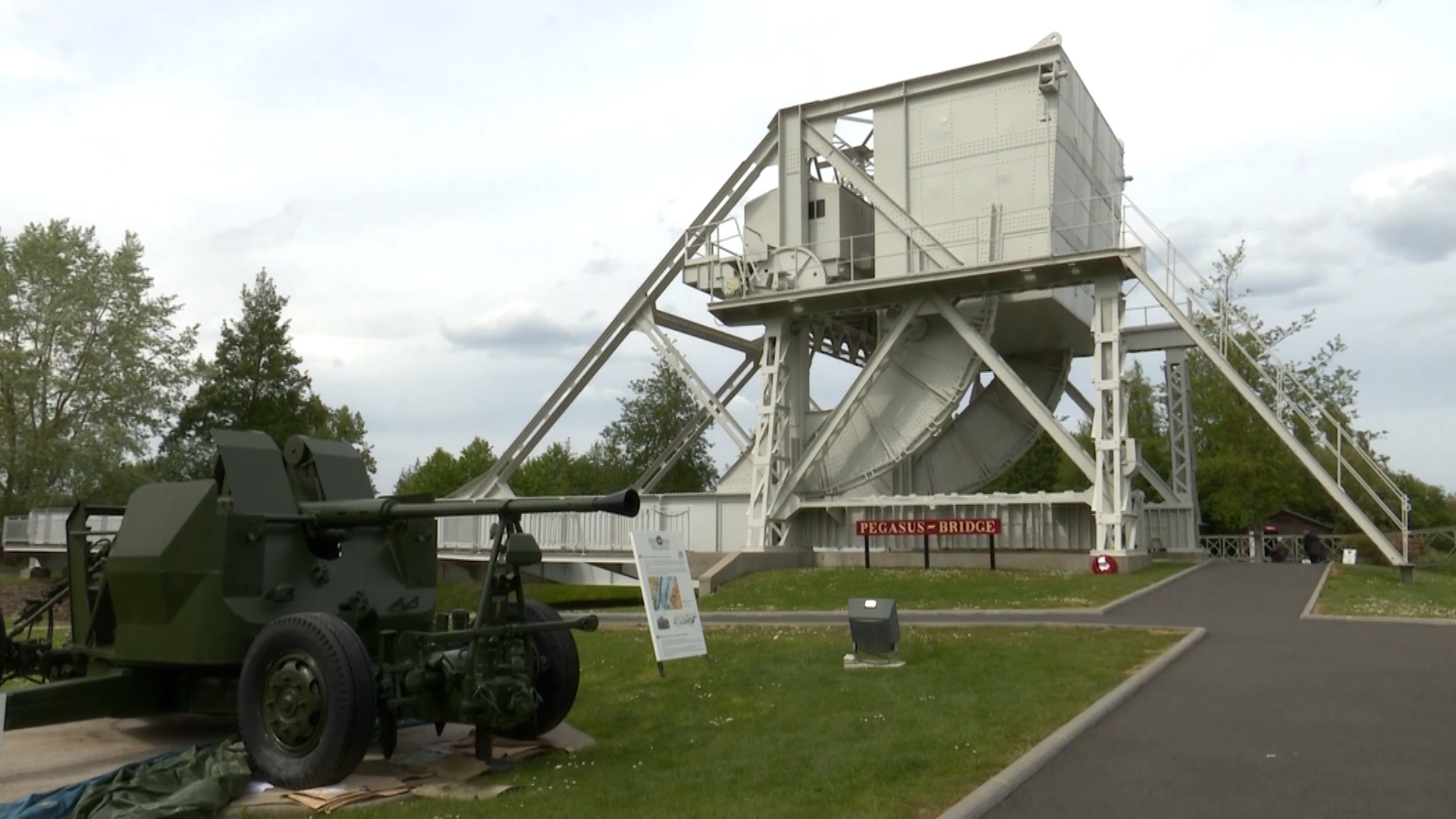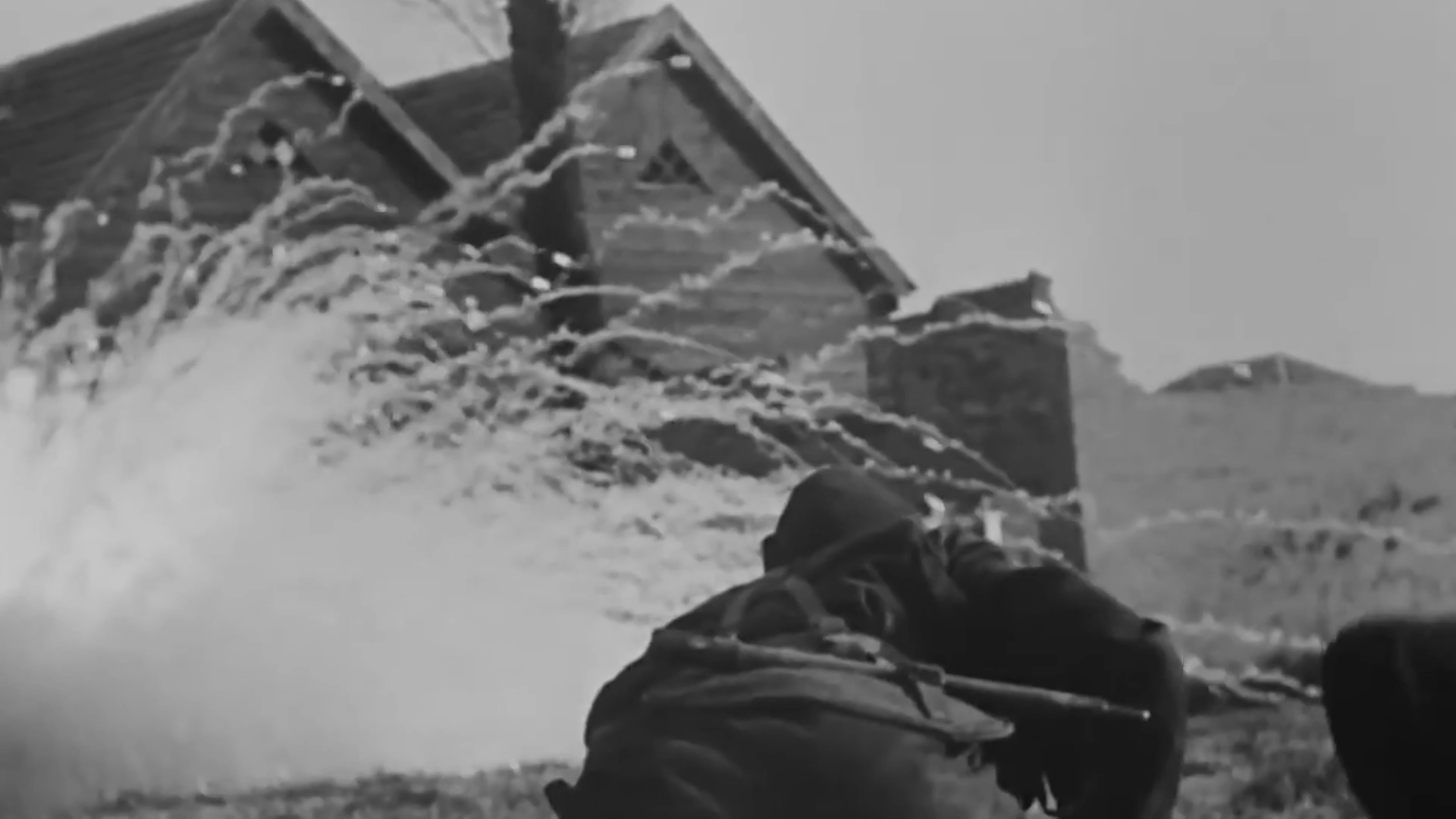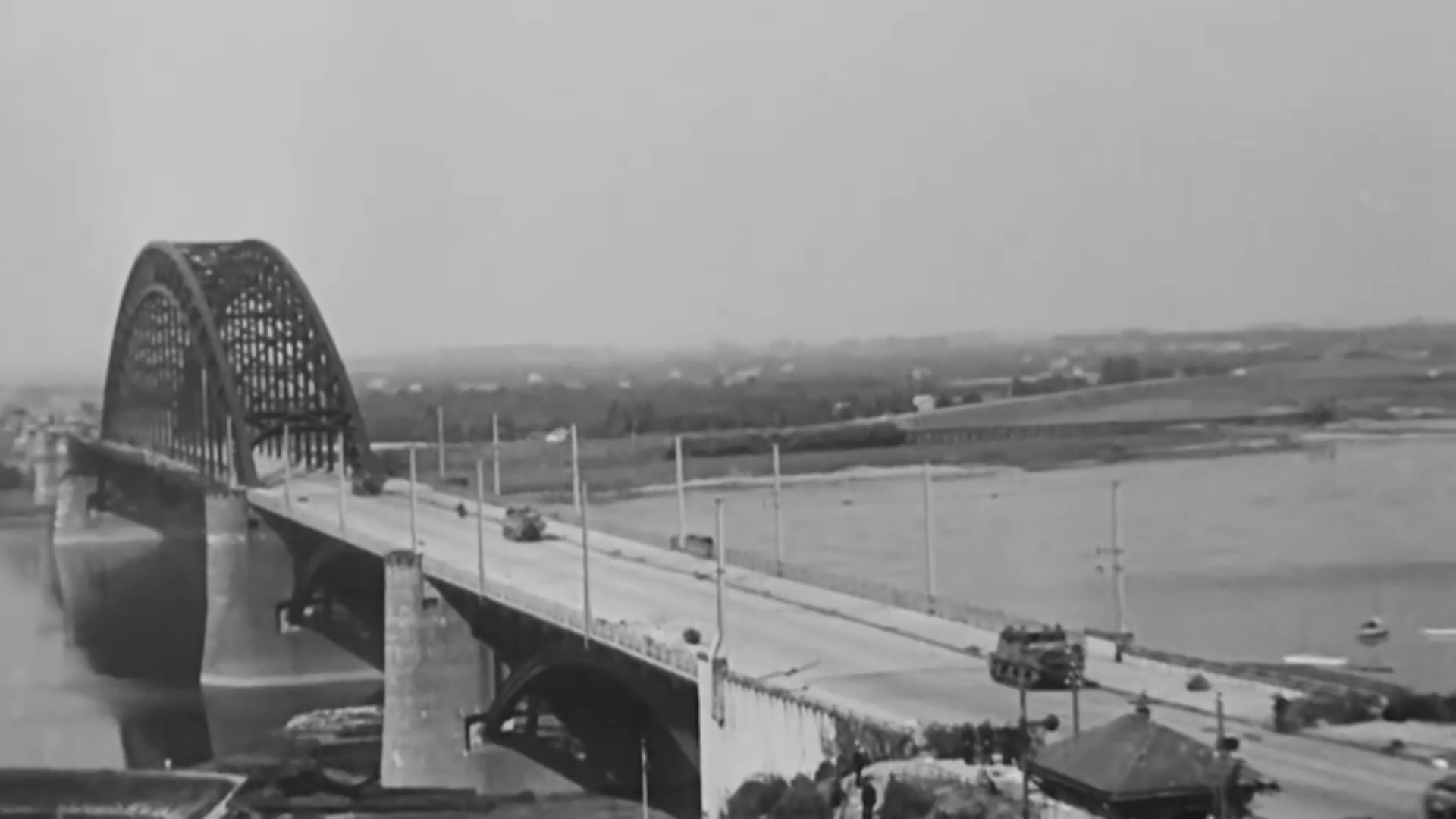Battle of Arnhem: The airborne operation that really was a bridge too far
On 17 September 1944, the Allies began dropping paratroopers into the German-occupied Netherlands.
Joined by airborne forces arriving in gliders, they eventually amassed around 41,000 troops.
They all had a specific mission: launch a thrust 64 miles into enemy-controlled territory, gain control of nine key bridges and create a launch point for an invasion into Germany itself.
But history has shown this daring mission only partially succeeded.
The bridge at Arnhem really did prove to be a bridge too far for the Allies.
Rivers are terrific natural barriers. They are great for military defence – but incredibly hard for attacking forces to overcome.
And if those forces can't get over the river, the offensive will stall – and that was the very real possibility faced by the Allied generals Eisenhower, Montgomery and Patton.
After D-Day they had made rapid progress through France, many German units being annihilated and their remnants falling into disarray.

But significant obstacles awaited, notably the Siegfried Line.
This amounted to 390 miles of German fortified defences stretching from the south of the Netherlands all the way to the Swiss border.
What to do? The Allies had to choose between making a small pointed thrust at one defined point or taking a broad front strategy.
The latter is what Eisenhower, the Supreme Allied Commander, wanted.
But Britain's General Montgomery advocated, as he put it, "one powerful full-blooded thrust across the Rhine and into the heart of Germany".
And after much argument that is what he got.
Perhaps his thinking was influenced by the success of the bridges that were captured and held on D-Day.
Before the Allies landed on the beaches, paratroopers and glider-borne forces took a bridge over the Caen Canal.
Now called Pegasus Bridge, the paratroopers successfully held it until they were relieved by the commandos on the ground.
The capture of the bridge severely hampered German efforts to reinforce their troops on the coast.
Could that strategy work again?

Operation Market Garden targeted nine bridges at various points around the south of the Netherlands.
Market would see airborne forces from the UK, the US and Poland take and hold the crossings, while Garden would see British land forces swiftly, reinforcing the bridges.
It sounded simple – and the tactics were proven.
But the operation came with its fair share of built-in problems. It relied on each and every element working.
If one part failed, there would be a cascade effect, rendering many other aspects of the mission untenable.
Nevertheless, the mission started promisingly.
In the first landing of paratroopers and gliders, over 80% landed within 3,300ft of their intended drop zone – a remarkable success.
Their objectives were the nine bridges over canals and rivers, and Nijmegen bridge was considered vital, but the bridge at Arnhem was their ultimate objective.
The British 1st Airborne Division was tasked with taking the bridge, and here the plan began to creak and eventually fail.
Only half the division arrived with the first airdrop, so they were down on numbers.
And Hitler had seen to it that there were far more German troops in the area than anticipated – including elements of the Waffen-SS.
Plus, he had reappointed sacked generals and they were starting to become much better organised – and more deadly.

Only two British units managed to reach the bridge at Arnhem.
Second Parachute Battalion, led by Lieutenant-Colonel John Frost, and the Headquarters Battalion, led by Major Tony Hibbert.
They set up defensive positions at the north side of the bridge.
Communications were an absolute shambles.
The British radios wouldn't talk to each other because they had been set to different frequencies, and what was worse, those frequencies were the same as German and British civilian radio stations.
In the end, Lt-Col Frost used the Dutch public phone system.
Fierce battles raged at the various bridges, but the Allies held firm and help was coming for the defenders of Arnhem bridge.
By the end of 18 September, 1st and 3rd Parachute Battalions were just 1.2 miles from the south of the Bridge.
But at a huge cost – they were down to 200 men, a sixth of their strength.
As the fighting raged it became clear there was no hope of relief for the British troops pinned down at the north of Arnhem bridge.
They fought on – some only with knives – but eventually they were captured.
Attempts were made to retake the bridge – including a valiant effort by the 1st Polish parachute brigade – but these also failed.

Ultimately the Allies withdrew from Arnhem back to Nijmegen.
Estimates say up to 17,000 Allied troops were killed, injured or captured during the whole operation and 500 Dutch civilians lost their lives.
Hitler exacted his revenge on the Netherlands by cutting off food supplies and around 22,000 civilians died of hunger.
The bridge at Arnhem truly was a bridge too far and was immortalised as such by the film of the same name in 1977.
But we remember it today as a valiant effort that could have succeeded – had so many factors not gone against the men on the ground.









